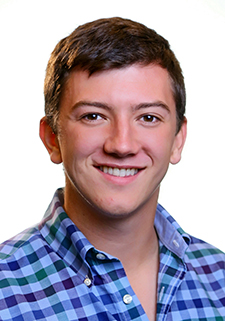Ben Toms earns 2 AMS outstanding presentation awards
Ph.D. student Ben Toms was chosen for two outstanding presentation awards at the American Meteorological Society’s annual meeting in January in Phoenix. Toms was honored for work completed during his M.S. studies, under the supervision of Professor Sue van den Heever. The Climate Variability and Change Program Committee selected Toms’ presentation, “Quantifying the Dependence of the Global Response to the Madden–Julian Oscillation on the Quasi-Biennial Oscillation,” for an Outstanding Student Presentation Award.
“We had a large number of very good student presentations this year, and we commend you on the work you have done,” committee members Rob Korty and Walt Robinson said in his notification letter.
Toms’ presentation was about quantifying the global “signature” of the Madden-Julian Oscillation within the upper troposphere and lower stratosphere.
“I have greatly enjoyed working with my collaborators on this project, (Professors) Libby Barnes, Eric Maloney, and Sue van den Heever,” Toms said. “We used a statistical technique to show that the global teleconnections of the Madden-Julian Oscillation depend on the phase of the Quasi-Biennial Oscillation, a tropical stratospheric oscillation. This suggests that the state of the tropical stratosphere is important for understanding the connections between the MJO and the extratropics.”
Toms also won an Outstanding Oral Presentation award at the 18th Conference on Artificial and Computational Intelligence and its Applications to the Environmental Sciences for his talk, “Climate Science, Deep Learning, and Pattern Discovery: The Madden−Julian Oscillation as a Test Case.”
For this project Toms worked with Karthik Kashinath and Prabhat of Lawrence Berkeley National Laboratory and Da Yang of the University of California, Davis to show that deep learning, a form of machine learning, can learn for itself the variables and spatial patterns important for characterizing multiscale geophysical phenomena such as the MJO. You can read a pre-print of the paper here.



